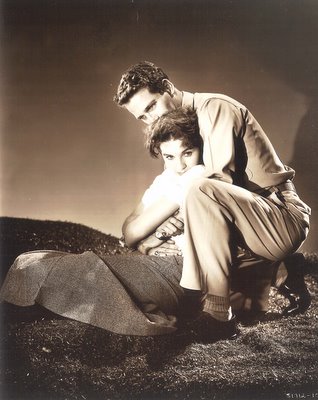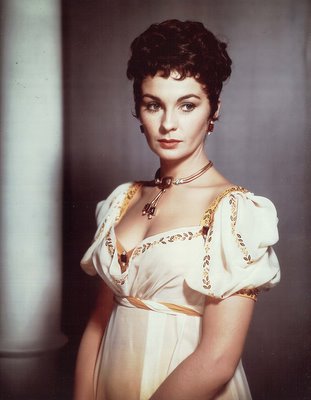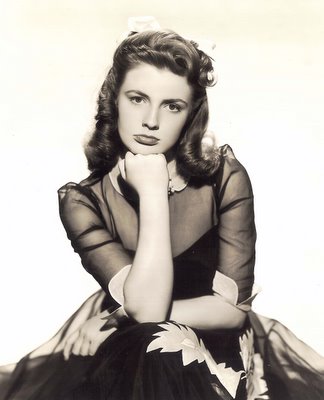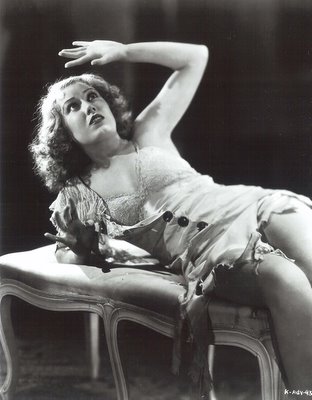



Jean Simmons Challenges The Code
Today is Jean Simmon’s 77th birthday, and as it happens, we just ran across these stills from an admittedly obscure Metro pic she did with Paul Newman in 1957, Until They Sail. The thing that got our attention, and hopefully yours as well, is how even publicity shots were, by that time, really beginning to challenge the Production Code. Needless to say, this pose on the bed promises something the movie itself will not deliver, but it does forecast the sixties breakdown of the Code that would finally usher in the adoption of the Ratings System. Beautiful But Dangerous was the RKO working title for which kittenish Jean appears here in her fishing get-up. The picture was ultimately retitled and released in 1954 as She Couldn’t Say No, and it was a real time waster for Jean and co-star Bob Mitchum (as a country doctor!). Why they put these two to work in a lame comedy like this instead of another noir like Angel Face is anyone’s guess.
HOUSEKEEPING ALERT
We’ve heard from a number of readers wanting another installment of Gary Cooper, and that’s good, as we’ve got lots more neat images we’d like to upload --- so keep checking by, cause we expect to have it up within the week. There’ll also be another Star Scrapbook feature, as we’re digging into more of the collection that yielded the Clara Bow images we used last week. Seems this guy was a Paulette Goddard enthusiast as well, and we found some great stuff there, so keep watching.
Some of our friends in Cyberspace have given Greenbriar a nice boost lately (we’re only a month old this week), and we’d like to acknowledge their kindness. CLASSIC MOVIES is Brad Lang’s terrific resource for news and updates on all things relating to vintage movies, and well worthy of a place on your favorites list. Same goes for IN THE BALCONY, whose moderator, Laughing Gravy, gave us our very first link. Gravy’s got DVD news (he stays on top of the classic announcements), a message board, and lotsa fun stuff. Mike Keaney’s Film NOIR site is a good place to lose yourself in any number of fascinating dark alleys. We found some great stuff here. LIBERTAS bills itself as "a forum for conservative thought on film", and they’ve got a real appreciation for the classics (nice TCM updates with images) as well as an eagle-eye for contemporary Hollywood machinations. THE THIRD BANANA is a celebration of unjustly neglected comedians, and it’s great. They did a piece a few months ago on a what if … teaming of Charlie Chaplin and El Brendel that’s just about the cleverest thing I’ve ever read. Finally, Tim Lucas and his Video WATCHBLOG are a Greenbriar must each morning, sure as Frugal Breakfast. He did a Gordon Scott essay recently that is hands down the best thing I’ve ever read on that most underrated actor, and just last week, I enjoyed some import DVD German westerns that I picked up as a direct result of his insightful review. Thanks Tim. I’d never have discovered these without ya!















































